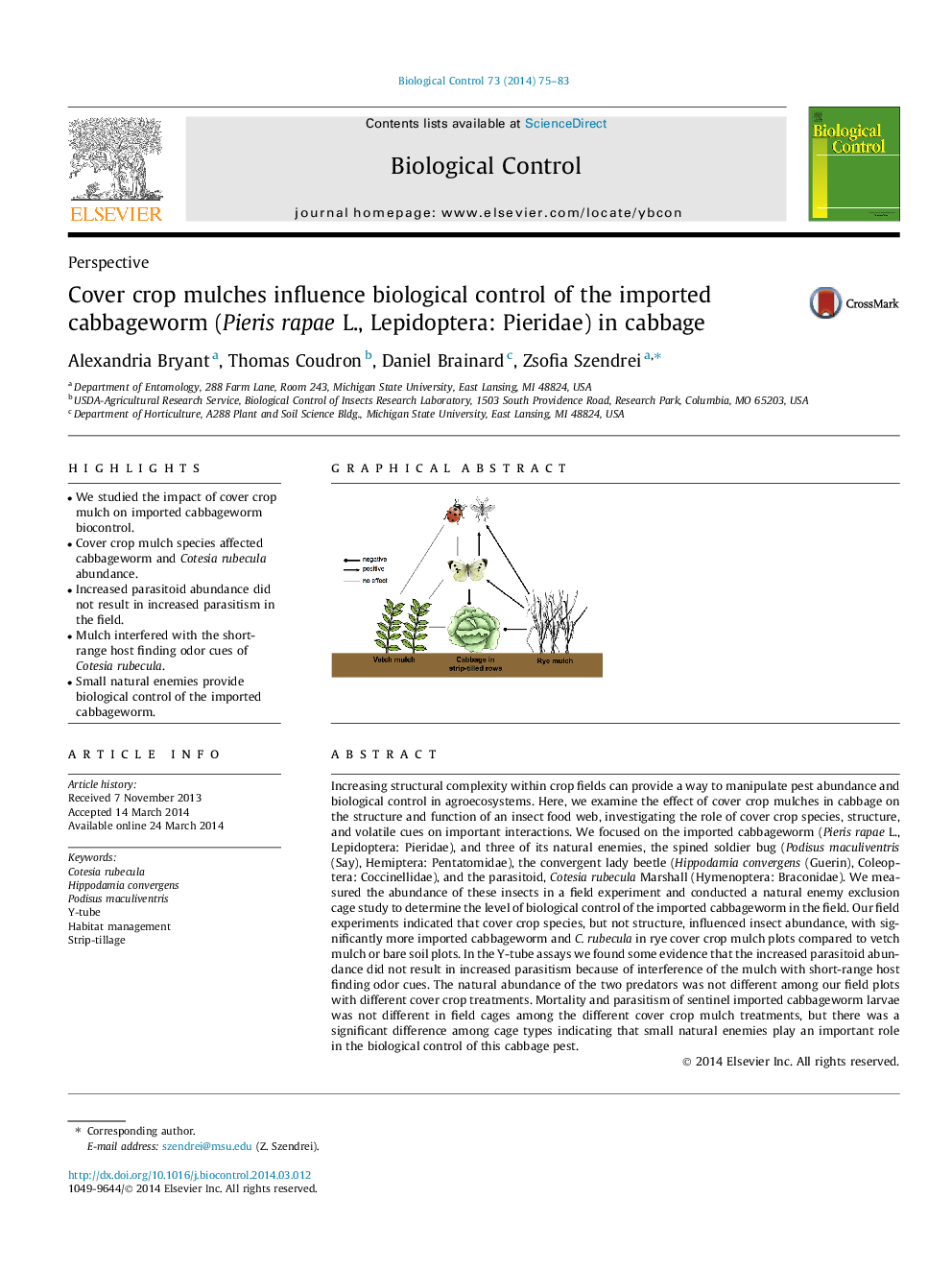| کد مقاله | کد نشریه | سال انتشار | مقاله انگلیسی | نسخه تمام متن |
|---|---|---|---|---|
| 4503922 | 1624261 | 2014 | 9 صفحه PDF | دانلود رایگان |

• We studied the impact of cover crop mulch on imported cabbageworm biocontrol.
• Cover crop mulch species affected cabbageworm and Cotesia rubecula abundance.
• Increased parasitoid abundance did not result in increased parasitism in the field.
• Mulch interfered with the short-range host finding odor cues of Cotesia rubecula.
• Small natural enemies provide biological control of the imported cabbageworm.
Increasing structural complexity within crop fields can provide a way to manipulate pest abundance and biological control in agroecosystems. Here, we examine the effect of cover crop mulches in cabbage on the structure and function of an insect food web, investigating the role of cover crop species, structure, and volatile cues on important interactions. We focused on the imported cabbageworm (Pieris rapae L., Lepidoptera: Pieridae), and three of its natural enemies, the spined soldier bug (Podisus maculiventris (Say), Hemiptera: Pentatomidae), the convergent lady beetle (Hippodamia convergens (Guerin), Coleoptera: Coccinellidae), and the parasitoid, Cotesia rubecula Marshall (Hymenoptera: Braconidae). We measured the abundance of these insects in a field experiment and conducted a natural enemy exclusion cage study to determine the level of biological control of the imported cabbageworm in the field. Our field experiments indicated that cover crop species, but not structure, influenced insect abundance, with significantly more imported cabbageworm and C. rubecula in rye cover crop mulch plots compared to vetch mulch or bare soil plots. In the Y-tube assays we found some evidence that the increased parasitoid abundance did not result in increased parasitism because of interference of the mulch with short-range host finding odor cues. The natural abundance of the two predators was not different among our field plots with different cover crop treatments. Mortality and parasitism of sentinel imported cabbageworm larvae was not different in field cages among the different cover crop mulch treatments, but there was a significant difference among cage types indicating that small natural enemies play an important role in the biological control of this cabbage pest.
Figure optionsDownload as PowerPoint slide
Journal: Biological Control - Volume 73, June 2014, Pages 75–83